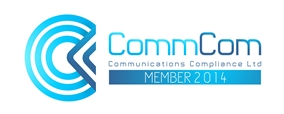Choosing an IT support structure is a lot like choosing a treat from the ice cream truck (we’re going somewhere with this, we promise). Some people are Fudgsicle people, while others always go for the Rocket Pop. The point is that IT support comes in different flavours designed to suit various needs and budgets.
Small businesses, which understandably have smaller budgets for IT spending, typically opt for low-overhead options. Specifically, they usually go for an hourly business IT support model, meaning companies are only charged by the provider when they actually use IT services. With this method, also known as break/fix, companies have access to expert IT support when their technical needs exceed their abilities. Unlike with a managed services provider or internal IT support provider, however, there’s no commitment to pay for ongoing support. Hourly support is the ice cream sandwich of IT services: simple, classic and provides just enough to get the job done.
Reduced upfront costs
The big draw of hourly IT support is the cost savings. If calls to the IT support centre are few and far between in your office, this payment structure just makes sense. Ditto if you have an on-site IT team that’s able to handle non-urgent issues. As supplemental 24/7 IT support, hourly IT is a good idea. After all, your internal IT guy probably appreciates being able to take a vacation every now and then!
If your support needs are fairly insignificant or irregular, you’ll find a pretty powerful argument for hourly IT support in the form of dollars saved. MSPs offer consistent monitoring, strategic planning and routine maintenance but nobody works for free, including business IT support providers. Opting for the hourly structure can reduce upfront IT costs, particularly if your budget for such expenses is extremely limited.
Unexpected maintenance costs
The downside to the hourly IT support method is that it’s often hard to predict when things will break. You may be breezing along, working with an out-of-the-box cloud storage solution and a few mobile devices and desktop stations when suddenly everything goes kaput. You can’t figure out how to back up your network, your Wi-Fi is on the fritz and because when it rains, it pours a couple of those trusty desktop stations decide it’s time they meet their makers.
The situation we just described may be extreme, but it’s not entirely unimaginable. After all, the break/fix method makes it difficult to budget for upgrading your machines, networks and servers. Instead of receiving regular maintenance, your systems and equipment will keep grinding along until something either give out or is diagnosed and fixed by nontechnical employees.
There’s obviously no way to predict when you’ll find yourself at the centre of a perfect technological storm. That said, regular system checkups by an expert can offer some insight into your equipment’s expected lifespan and may even help you squeeze out a few additional years.
Impacted productivity
A slow computer or network adds time to every task you undertake. Moreover, when members of your team take time out of their days to deal with network outages or computer issues, that’s time they’re not using to work on their core objectives, which translates to lost productivity.
When you don’t have a dedicated IT team at your disposal, the work of correcting computer issues often falls to other team members. With an hourly IT support structure, employees typically need prior authorisation to contact IT services, so it’s faster (and less awkward) to diagnose computer issues themselves.
The problem is that unless you happen to have an amateur computer whiz on staff, you’re trusting the livelihood of your equipment to someone who may not really know what they’re doing. Meanwhile, something that a pro may need 30 minutes to diagnose and correct can take an inexperienced employee a full day of Googling and trial and error. When you add up the resultant lost labour, your hourly IT support system could be costing you a great deal of money.
Calculating your actual IT costs
That’s not to say hourly business IT support isn’t a good fit for small businesses. There are several factors at play, including your equipment, the internal resources available, your budget and what you have planned for your IT in the future. However, given the number of hidden IT costs associated with the hourly model equipment replacement, lost business during outages, reduced employee productivity, etc. it’s likely worth taking a more holistic approach.
Tracking how much time you spend internally fixing IT issues and how frequently you replace and repair equipment will help you get a feel for the real costs of business IT support. However, the cost isn’t the only thing to consider when you hire an IT services provider.


